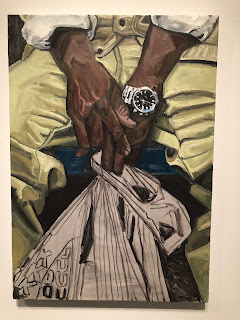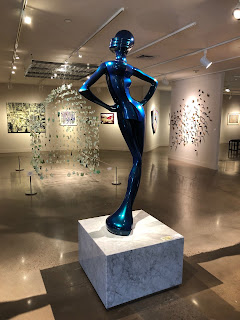Each fall in the early weeks of school, I read to my class a list of "Life Strategies for Teens" from a book by Jay McGraw, who happens to be the son of Dr. Phil. It's an amusing little bell starter, and I book talk it a bit, mock warning them I'm going to recommend it to their parents, so they may expect one as a gift sometime soon. I also tell them I'll encourage their parents to purchase two copies, "so you can read it together and discuss it over dinner." The list of strategies form chapters of guidance, and the aphoristic nature needs some explanation:
- You either get it, or you don't.
- You create your own experience.
- People do what works. (successful, happy, well-adjusted people at least)
- You cannot change what you do not acknowledge.
- Life rewards actions.
- There is no reality, only perception of it.
- Life is managed; it is not cured.
- We teach people how to treat us.
- There is power in forgiveness.
- You have to name it before you can claim it.
The one bit of guidance I like to key in on is the one that opens this post: Life is managed; it is not cured. I honestly, but somewhat regretfully reveal to the students the most important lesson we can ever learn -- it will never be OK, never done, never perfect. Life is a continual process of rises and falls and many lateral movements, and some time after early childhood we start to experience that. However, in a naive desire to get back to that mythical time of innocence when everything was OK, we start setting arbitrary and transient milestones and finish lines for ourselves.
It probably starts in middle school when most of us first begin to deal with the "stuff" of life that isn't so pleasant. And, we tell ourselves if we can just get through this and on to high school, "it'll all be OK." Once in high school, when the stuff closes in again, we tell ourselves, "I just need to get my license, and then it'll be better. It'll be OK." But of course, the stuff closes in again, and we repeat the cycle. I just need to get through this week of tests, or whatever, and then I can regroup and get organized and focused and never fall behind again. And, then I just need to be eighteen, just need to get into college, just need to move out, just need to get my own place, just need to turn twenty-one, just need to graduate, just need to get a job and a place of my own, just need to get this one promotion, just need to get to that next level ... and then it will be OK. Then I'll be satisfied. Then I can relax. Then I can calm down. Then I can stop worrying.
But it will never be OK. And, the only disappointment in our life comes from believing that we can get to a certain point, and that will fix what ails us. Life is managed. It's every day a new task, a new situation, a new something. And, when things are going well, you can be fairly certain they will eventually go south, or at least sideways. And, when things are really ... sucking, you can be fairly certain that it won't last, and things will get better, if even just marginally.
It'll never be OK. And when we realize that, it's really going to be fine.

